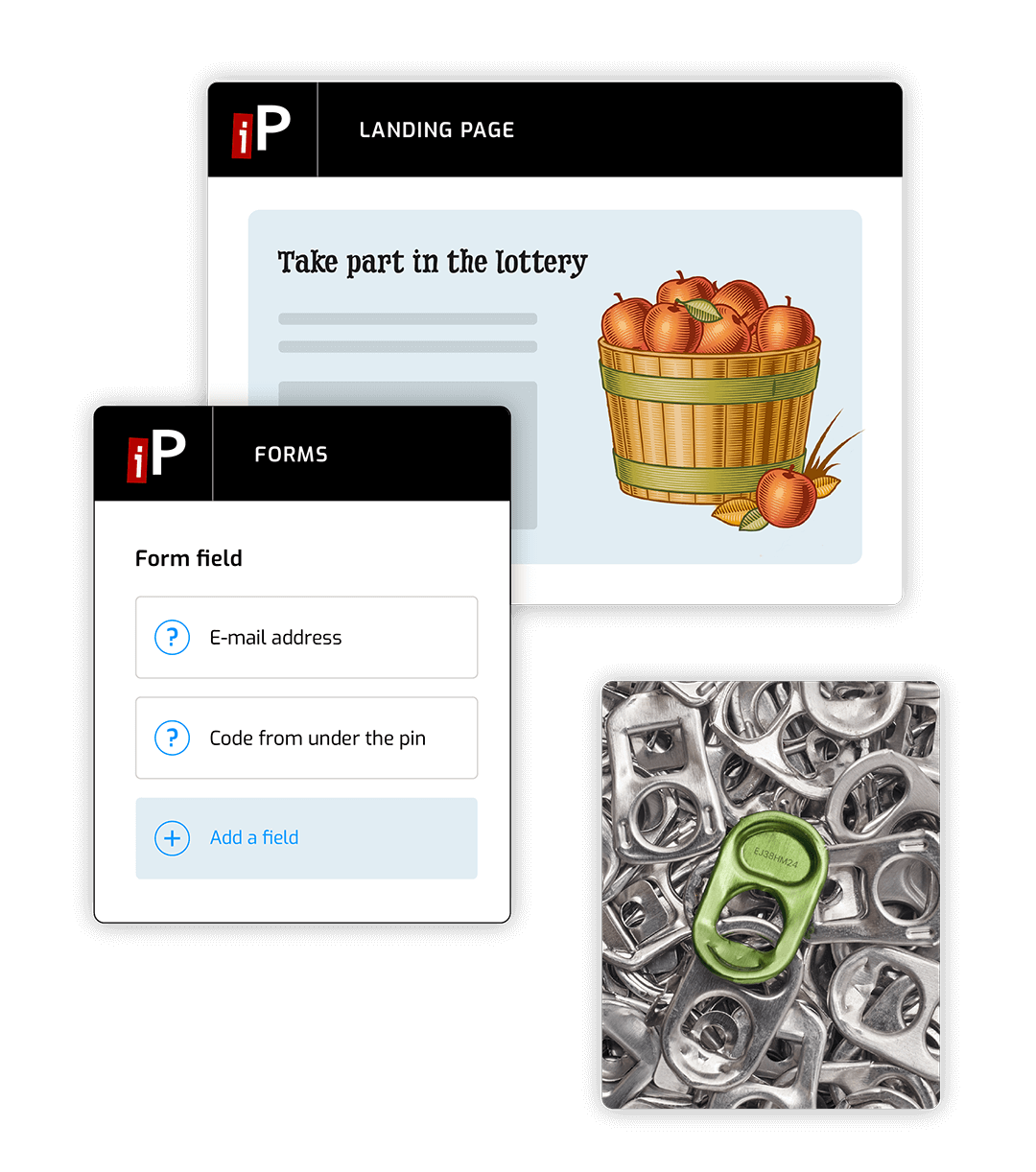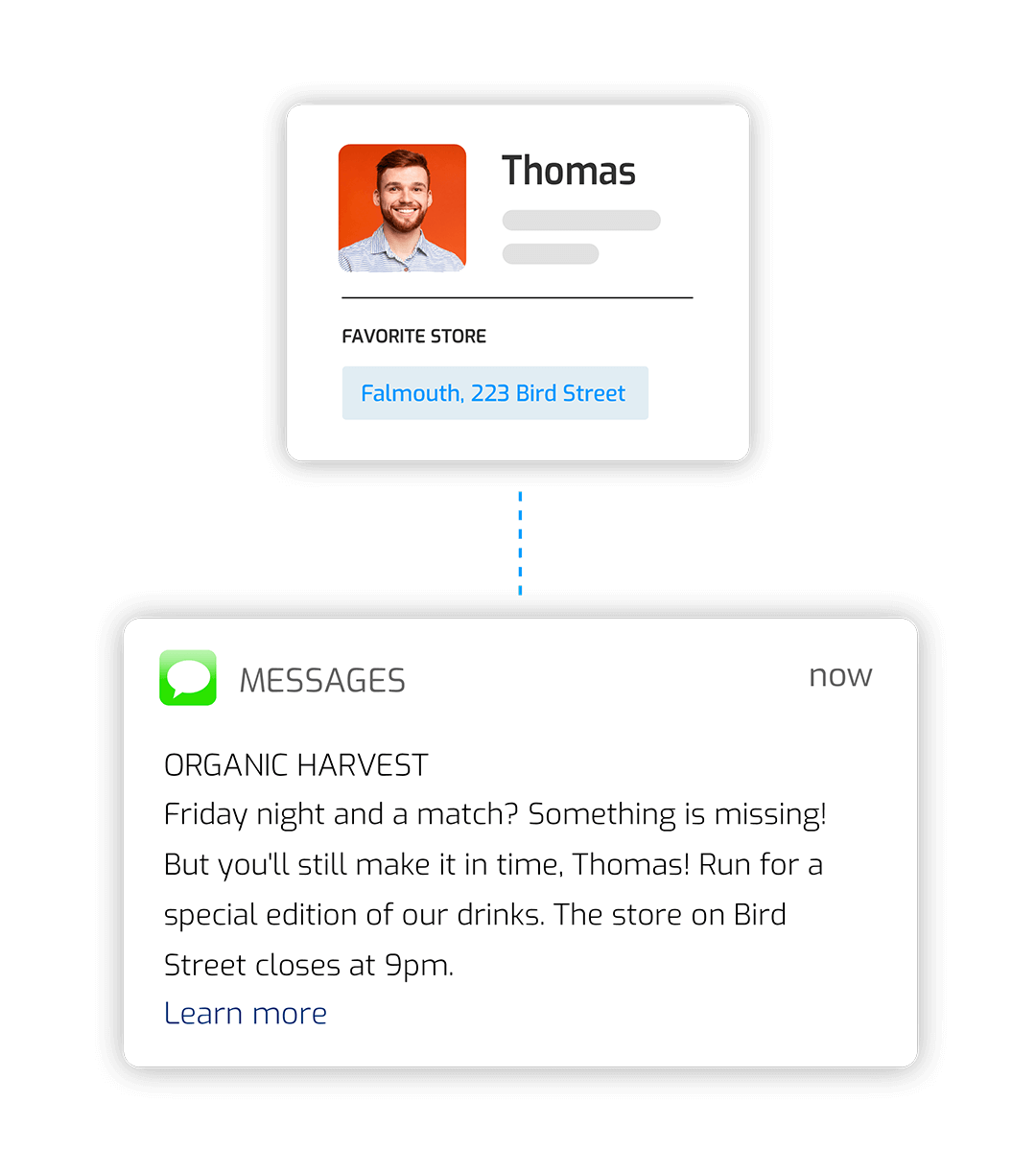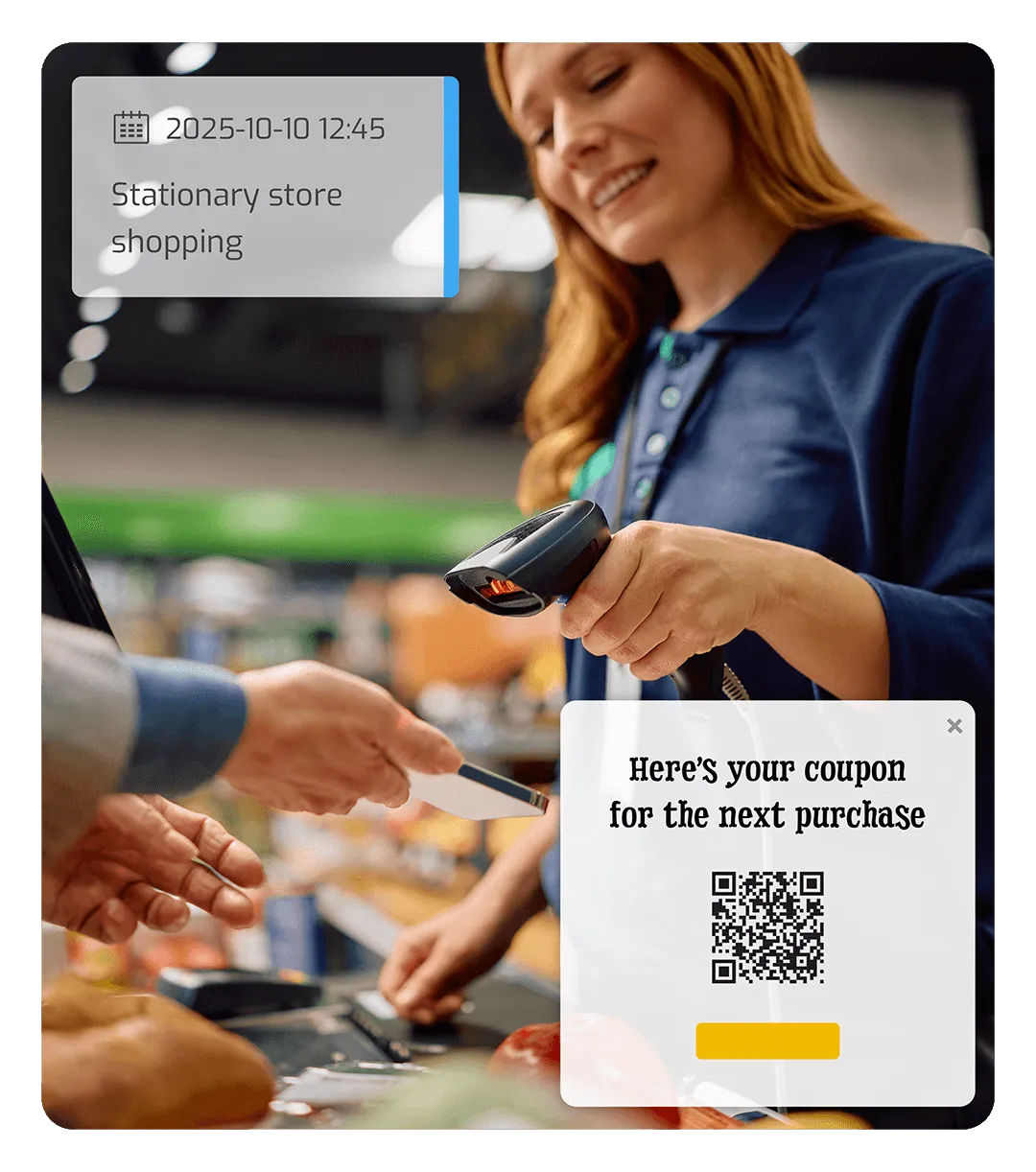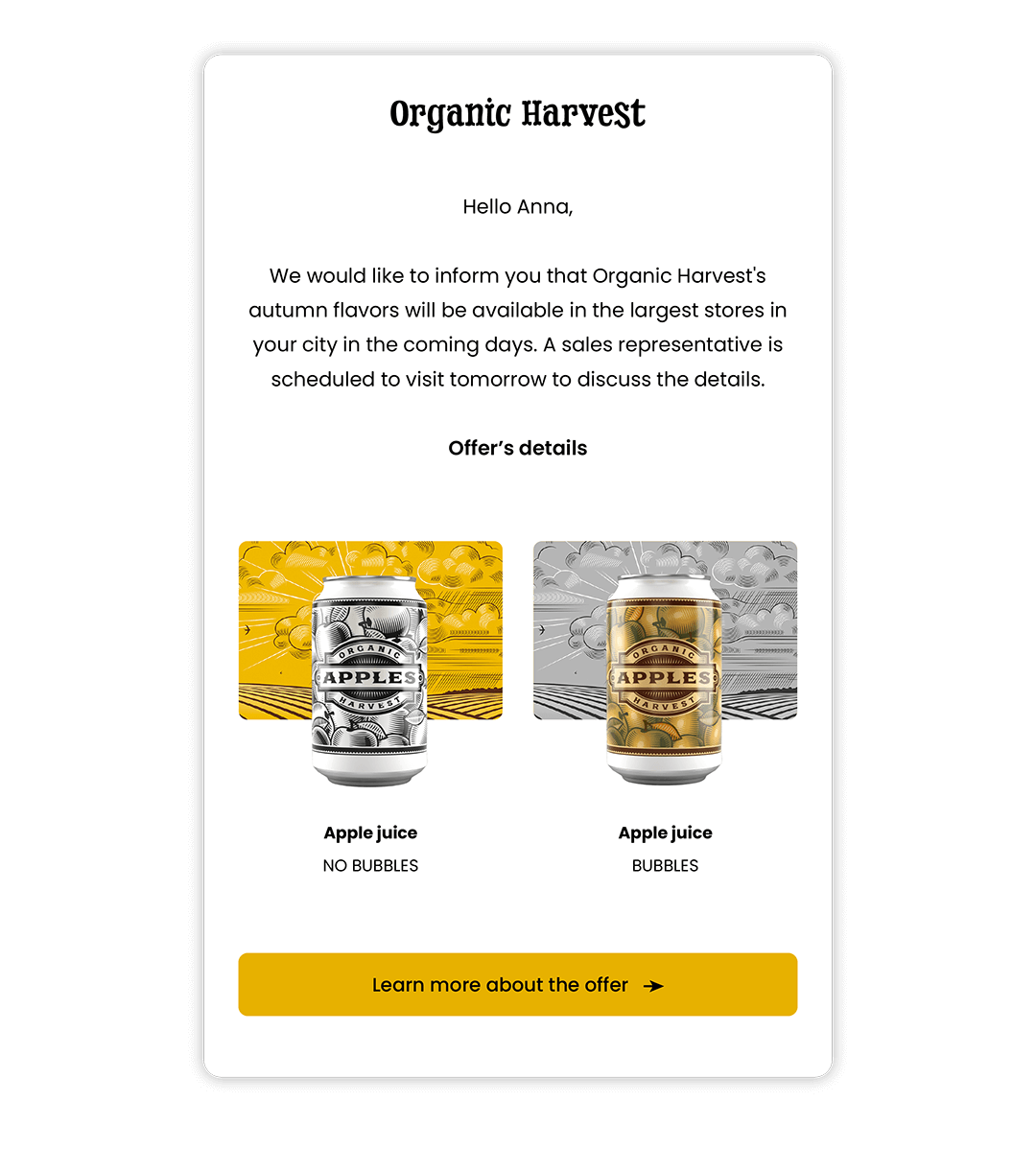

DigitalFMCG by iPresso supports sales of consumer goods producers in every channel, from local heroes to global brands.
DigitalFMCG comes with know-how, training & support: results and the next level of digital excellence within weeks.






*coming soon
Consumer promotions
Communication to POS (Point of Sale)
Impact on brand awareness
Driving traffic to POS (Point of Sale)
Research and tailoring of offers/communication
Systematic database growth = increased reach
More targeted actions











The implementation timeline is flexible and depends on a few factors, such as the size of your contact database and the specific features you want to focus on initially.
We strive to make this process as quick and straightforward as possible. At every stage of the implementation, you’ll have the full support of our Customer Support and IT experts.
With their guidance, the entire process is typically completed in a week or less. Our team will help you configure the system, import your data, and launch your first campaigns so you can start taking full advantage of marketing automation right away
To start, one person - like a Marketing Specialist - is perfectly capable of managing the system and running effective campaigns.
As your company and strategy grow, iPresso naturally evolves into a core tool for your entire marketing team. Each person, from the Content Manager to the Analyst or E-commerce Specialist, can leverage its features for their specific area of focus.
The bottom line is that the system is designed to scale with you. You can start with a single user and smoothly expand to a full team as your needs and ambitions grow.
Yes, you have two options. On our end, you get a dedicated Customer Success Manager to help guide your strategy, analyze your results, and optimize your campaigns. However, if you're looking to hand off all the day-to-day operational work, we can connect you with one of our expert partner agencies.
The price for iPresso is mainly determined by three things:
Ready to see what iPresso's Digital FMCG can do for your company?
Just fill out this quick form so we can make our conversation completely focused on your specific goals.
Here's the link to the form: https://www.ipresso.com/brief
Once we get it, we'll reach out to find the perfect time to connect.




Download the free e-book and learn how marketing automation will help you beat the competition.

In the FMCG industry, there are many indicators that help analyze and evaluate the financial performance of companies. One of the key measures - particularly popular in the context of investments and growth assessment - is CAGR (Compound Annual Growth Rate), also known as the average annual cumulative profit.
This is one of the most reliable tools for measuring growth rate. Eliminates the influence of fluctuating annual values, providing a more balanced perspective.
CAGR measures the average annual growth rate of a given quantity over a specified period of time, taking into account the cumulative effect. This is especially useful when financial data shows irregular fluctuations and we want to obtain one, consistent annual value.
In practice, CAGR helps to understand how a given value has changed annually over a specific period, which is particularly important when analyzing investments, growth forecasts, or assessing a company's performance in the long term.
In the FMCG industry, constant challenges include: changes in consumer trends, competition and a dynamic market environment.
Tools such as CAGR play an important role in analyzing growth in this industry.
CAGR evaluates the growth rate of product sales over a given period. This allows you to understand whether a given product/product line/category is growing in a stable and sustainable way.
In the FMCG industry, consumer preferences and trends are changing dynamically. CAGR helps forecast what changes may occur in the future in a given market segment. This supports strategic planning.
When introducing new products to the offer, CAGR helps monitor and assess how quickly a given product will gain acceptance in the market. This will be useful in identifying potential bestsellers and directing your marketing strategy towards promoting these products.
CAGR is useful in market penetration analysis, especially when an FMCG company introduces products to new geographic areas or explores new target segments. This helps you understand how effectively a company attracts new customers.
Companies from the FMCG industry very often carry out various marketing campaigns. You can use CAGR to analyze whether specific campaigns contribute to sales growth in the long run.
Most FMCG companies have a wide product portfolio. CAGR allows you to assess which products generate the most stable growth and which may require adjustment or introduction of a product lifecycle management strategy.
By comparing the CAGR between different companies or brands in the FMCG industry, you can assess which company has more dynamic growth. This tool supports competition analysis and identification of key market players.
In the FMCG industry, where the pace of change is rapid and competition is intense, CAGR is an invaluable tool for analyzing growth. By providing a coherent and balanced perspective, it helps decision-makers make accurate strategic decisions, which is crucial in the dynamic FMCG market environment.
Investments in fixed capital (Capex) play a key role in the FMCG (Fast-Moving Consumer Goods) industries, especially in the food and detergent industries. For these sectors, which are characterized by a rapid pace of change, intense competition and rising consumer expectations, effective investment strategies are not only important, but essential to maintaining market position and generating growth.
Investments in fixed capital (Capex) in the FMCG (Fast-Moving Consumer Goods) industries refer to expenses incurred for the purchase, modernization or expansion of durable assets used in the production, distribution and promotion of fast-moving consumer goods. In the context of FMCG, Capex includes investments in machinery, production equipment, warehouses, logistics infrastructure and means of transport.
In the FMCG industry, where speed of response to changing market trends and production flexibility are key to success, appropriate investments in fixed capital are necessary to maintain competitiveness and meet growing consumer expectations. Capex's activities in the FMCG industries are aimed at increasing production efficiency, improving product quality, optimizing logistics processes and increasing production capacity, which translates into the ability to more quickly adapt to changes in market demand and increase market shares.
The impact of Capex on competitiveness in the FMCG sector is unquestionable. Through appropriate investments in fixed capital, enterprises can improve their production processes, improve product quality and increase logistic efficiency. This, in turn, translates into the ability to quickly respond to changing market conditions and flexibility in meeting dynamic consumer expectations. Thanks to Capex, companies can also expand their production capabilities, which allows them to increase market shares and strengthen their competitive position. In other words, investments in fixed capital are a key tool that allows FMCG companies to stay on the market and generate growth in the long term.
The key factors influencing the Capex strategy in the FMCG industries include the dynamics of market changes, consumer trends, industry regulations and technological innovations. These factors require companies to make strategic investment decisions, which may include modernization of existing infrastructures, expansion of production capacity, introduction of new technologies or expansion into new markets. The impact of these factors means that Capex strategies in the FMCG sector must be flexible and adapted to changing market conditions to enable companies to remain competitive and generate growth.
The article discusses key aspects of investment in fixed capital (Capex) in the FMCG (Fast-Moving Consumer Goods) industries, with particular emphasis on the food and detergent sectors. Capex plays an important role in these sectors, enabling companies to adapt to changing market trends and ensure competitiveness through innovation, production and logistics efficiency. Key factors influencing Capex strategy include market dynamics, consumer trends, industry regulations and technological innovations. It is important for FMCG companies to make flexible and well-thought-out investment decisions that will allow them to stay on the market and achieve long-term growth.
With the dynamic technological development and changing consumer preferences, the FMCG (Fast-Moving Consumer Goods) industry is moving towards new sales and distribution models. One of the most promising solutions that is revolutionizing the way consumers shop is the Click & Collect strategy. In this article, we will look at how Click & Collect is transforming the FMCG industry, ensuring convenience for consumers and efficiency for producers.
Click & Collect is a shopping model in which customers place an order online and then collect their products in person at a selected collection point, often in a stationary store or a specially designated collection point. It is a hybrid model that combines the convenience of online shopping with the possibility of quick order pickup.
Click & Collect offers consumers a number of benefits. Firstly, it allows you to conveniently make purchases from anywhere and at any time, eliminating the need to physically visit stores. Moreover, thanks to the ability to quickly collect the order, customers can avoid long queues and the time-consuming process of searching for products in the store. This makes Click & Collect particularly attractive for people who value their time and convenience.
For FMCG producers, the Click & Collect strategy opens up new opportunities to optimize distribution processes and increase sales. By enabling customers to receive orders quickly, companies can reduce shipping costs and delivery times, which translates into improved operational efficiency. Moreover, by integrating data from various sales channels, manufacturers can better understand the preferences and purchasing behavior of their customers, which allows for more targeted and effective marketing activities.
Despite the numerous benefits of the Click & Collect strategy, there are also some challenges that manufacturers and retailers must face. These include the need to provide appropriate logistics infrastructure, effective inventory management and adaptation of operational processes to the new sales model.
However, despite these challenges, the prospects for the development of the Click & Collect strategy in the FMCG industry are promising. Over time, we can expect greater integration of this model with other sales channels, expansion of the network of collection points and further technological development, which will enable even more personalized and effective shopping experiences for customers.
Click & Collect is a new era of shopping in the FMCG industry that brings benefits to both consumers and producers. By combining the convenience of online shopping with quick order pickup, Click & Collect is becoming an increasingly popular option for people looking for effective and convenient ways to shop. With further technological development and optimization of operational processes, this strategy can be expected to play an increasingly important role in the future of the FMCG industry.
In the face of the fast pace of life and constantly changing consumer needs, convenience is becoming a key factor shaping the way people make everyday purchases. In the FMCG (Fast-Moving Consumer Goods) industry, the convenience concept is transforming traditional sales and distribution models, providing consumers with quick access to products and convenient shopping. In this article, we will look at how convenience is revolutionizing the FMCG industry and what benefits it brings to both consumers and producers.
In the context of the FMCG industry, convenience refers to the delivery of products in a way that is as convenient as possible for consumers. This includes a variety of strategies such as convenience stores, e-commerce, on-demand delivery and purchasing process automation.
For consumers, convenience is a key factor determining the choice of products and places to shop. Thanks to modern solutions such as e-commerce or mobile applications, customers can make purchases from anywhere and at any time, eliminating the need to physically visit stores. In addition, convenience stores offer quick access to the products you need, which allows you to save time and avoid the frustration associated with long queues or lack of goods on the shelves.
For producers, convenience strategies open up new opportunities to reach customers and increase sales. By analyzing purchasing data and consumer preferences, companies can offer more personalized products and services, which in turn translates into customer loyalty and increased sales. Moreover, convenience strategies enable producers to quickly respond to changing market trends and be flexible in adapting the offer to customer needs.
Despite the numerous benefits that convenience brings, there are also some challenges that both customers and producers must face. These include the need to provide appropriate logistics infrastructure, data security and protection of customer privacy.
However, despite these challenges, the prospects for developing the convenience strategy in the FMCG industry are promising. Over time, we can expect greater integration of various sales channels, expansion of the offer of convenience products and further technological development, which will enable even more personalized and effective shopping experiences for customers.
Convenience is a key factor that is shaping the new era of shopping in the FMCG industry. Thanks to various strategies such as e-commerce, convenience stores and on-demand delivery, customers can enjoy the convenience of shopping and quick access to the products they need. For producers, convenience opens up new opportunities to increase sales and build customer loyalty by personalizing the offer and quick response to changing market needs. With further technological development and optimization of operational processes, it can be expected that the convenience strategy will play an increasingly important role in the future of the FMCG industry.
The Consumer Price Index (CPI) is a key indicator used to measure changes in the prices of consumer goods and services in the economy. In the FMCG (Fast-Moving Consumer Goods) industry, CPI plays an important role in understanding the dynamics of product prices, their impact on consumer budgets and consumption trends. In this article, we analyze the increase in CPI in the FMCG industry and its impact on consumer purchasing behavior and company strategies.
In recent years, there has been an increase in CPI in the FMCG industry, which was caused by a number of factors, such as increases in production, transport and marketing costs, regulatory changes and fluctuations in raw material markets. An increase in CPI may have various consequences for consumers and producers, depending on the specificity of the products and the elasticity of demand.
An increase in CPI may lead to a decrease in consumers' purchasing power, which in turn may change their purchasing behavior. Customers may be more willing to look for cheaper product alternatives, investigate promotional offers, or reduce spending on products deemed less important. As a result, an increase in CPI may lead to a change in the structure of demand on the FMCG market and influence the pricing strategies of companies.
In the face of rising CPI, companies in the FMCG industry can undertake a variety of strategies to minimize the negative impact on their financial performance. They may use pricing strategies such as reducing margins or introducing cheaper product variants to remain competitive in the market. Additionally, companies can look for ways to optimize production, logistics and marketing costs to offset CPI increases and maintain business profitability.
Although the increase in CPI poses a number of challenges for companies in the FMCG industry, it can also be an impulse for innovation and development. Companies can look for new ways to optimize production processes, implement more effective marketing strategies, and invest in research and development to create more competitive products and services.
The increase in CPI in the FMCG industry is a significant challenge that requires flexibility and innovation on the part of companies and awareness and adaptation on the part of consumers. Analyzing CPI dynamics and its impact on consumption and company strategies can help understand the changing nature of the FMCG market and develop appropriate pricing management strategies that will ensure long-term profitability and competitiveness.
Everyday Low Price (EDLP) is a pricing strategy that involves offering products at constant, low prices at all times, as opposed to promotional strategies based on periodic price reductions. In the FMCG (Fast-Moving Consumer Goods) industry, EDLP is becoming an increasingly popular strategy that aims to attract customers through competitive prices and build long-term customer relationships. In this article, we will discuss how EDLP affects the FMCG industry and what its benefits and challenges are.
EDLP's philosophy is based on simplicity and price transparency, eliminating the need to use complex promotions and price reductions. In the context of the FMCG industry, where customers often look for low prices and quick access to products, the EDLP strategy may be particularly attractive.
For consumers, the main benefit of an EDLP strategy is the ability to benefit from low prices at all times and avoid having to wait for promotions or price reductions. In addition, EDLP can also ensure constant product availability, eliminating the risk of stock shortages in the event of periodic price reductions.
For manufacturers, an EDLP strategy can help increase revenue stability by eliminating demand fluctuations associated with periodic promotions. Additionally, EDLP can facilitate pricing and inventory management, which translates into lower operating costs and improved business efficiency.
Despite numerous benefits, the EDLP strategy poses certain challenges to companies in the FMCG industry. These include the need to maintain price competitiveness while ensuring sustainable margins and appropriate product quality. Additionally, an EDLP strategy may require more marketing and communications resources to convince customers to choose consistent, low prices.
Everyday Low Price (EDLP) is a pricing strategy that has the potential to transform the way customers shop in the FMCG industry. For consumers, this means constant access to products at low prices, while for producers it may mean greater income stability and better manageability. Despite the challenges of maintaining price competitiveness and sustainable margins, the EDLP strategy remains an attractive option for companies seeking to build long-term customer relationships and sustainable business development in the FMCG industry.
Gross Leasable Area (GLA) is a key indicator measuring the total area that can be rented by tenants in a shopping center, shopping mall or other commercial facility. In the FMCG industry, especially in the context of retail trade, GLA plays an important role in planning store space and managing commercial facilities. In this article, we will discuss the importance of GLA in the FMCG industry and its impact on retail.
GLA is the total area available to tenants in a commercial facility, including the area of shops, kiosks, service points and other areas intended for commercial use. GLA measurement also includes common areas such as corridors, toilets, stairwells and elevators.
In the FMCG industry, especially in the retail sector, GLA is crucial for planning store space and effective use of retail space. A thorough GLA analysis allows for optimal arrangement of stores, maximizing space rental and increasing the attractiveness of the shopping facility for tenants and customers.
Increasing GLA may contribute to the development of retail trade, creating more opportunities for new stores and service points. However, excessive increases in GLA may lead to market oversaturation, competition between stores and a decline in profitability for tenants and owners of retail facilities.
In order to optimize GLA in the FMCG industry, it is crucial to carefully plan store space, taking into account consumer trends, customer preferences and profitability analysis for various product categories. Moreover, GLA management requires constant adaptation to changing market conditions and dynamic customer needs.
Gross Leasable Area (GLA) is an important indicator measuring the rentable space in commercial facilities in the FMCG industry. Effective GLA management is crucial for the development of retail trade, improving the attractiveness of commercial facilities and increasing profitability for tenants and owners. By carefully planning store space and constantly monitoring market changes, you can achieve GLA optimization and ensure success in the FMCG industry.
O2O (Online to Offline) is a retail strategy that integrates online and offline shopping experiences, providing customers with a comprehensive and personalized shopping journey. In recent years, O2O has become a key trend in the FMCG (Fast-Moving Consumer Goods) industry, bringing a revolution in the way consumers make purchases. In this article, we will discuss the importance of O2O in the FMCG industry and its impact on retail.
O2O is a strategy that uses the potential of the Internet and modern technologies to shape shopping experiences that are integrated and consistent both online and offline. Consumers can browse and buy products online and then pick them up in-store or use on-demand delivery services. O2O focuses on flexibility and convenience, allowing customers to choose their preferred form of shopping.
For consumers, O2O means greater convenience and flexibility in making purchases. They can benefit from a wide range of products available online and at the same time enjoy the option of pickup or delivery at a place and time of their choice. Moreover, O2O allows customers to easily compare prices, read opinions of other users and take advantage of promotions and discounts available only online.
For FMCG companies, the O2O strategy opens up new opportunities to reach customers and increase sales. By integrating online and offline channels, companies can build consistent shopping experiences that engage customers at different stages of their purchasing journey. Additionally, O2O enables companies to collect data and analyze customer purchasing behavior, which allows for more targeted and personalized marketing activities.
Despite the numerous benefits of the O2O strategy, its implementation may involve some challenges. These include the need to ensure integration and consistency between online and offline channels, inventory and logistics management, and adaptation to changing customer preferences and expectations.
The prospects for the development of O2O strategies in the FMCG industry are promising. As technology develops and changes occur in the way consumers shop, the importance of O2O can be expected to continue to grow. FMCG companies will continue to invest in integrating online and offline channels and developing personalized and engaging shopping experiences for their customers.
O2O is a new era of retail in the FMCG industry, which provides customers with greater convenience and flexibility in making purchases, and opens up new opportunities for companies to reach customers and increase sales. Despite the challenges associated with implementing and managing an O2O strategy, the prospects for its development are promising, which is an important factor shaping the future of retail in the FMCG industry.
Point of sale (POS) is a key element in the supply chain and retail trade in the FMCG (Fast-Moving Consumer Goods) industry. It is the place where customers make purchases and complete transactions, creating a critical point of contact between companies and consumers. In today's digital world, POS is no longer limited to physical stores but also includes e-commerce platforms and other online sales channels.
The point of sale plays a key role in the entire commercial process in the FMCG industry. It is here that customers have the opportunity to physically see, touch and test products, which can have a significant impact on purchasing decisions. Moreover, POS serves not only as a place of sale, but also as a contact point where customers can obtain information about products, receive help from sellers and take advantage of various promotions and discounts.
With the development of technology and changes in consumer purchasing preferences, POS has undergone significant evolution. Traditional, stationary stores have been supplemented with new sales channels, such as online stores, mobile applications and e-commerce platforms. This gives customers more shopping options, and companies must adapt to changing trends and customer expectations.
Effective POS requires meticulous planning and management of various elements. Belong to them:
Despite the numerous benefits that POS brings, there are also some challenges that companies must face. These include competition with e-commerce platforms, growing customer expectations for speed and convenience of shopping, and the need to constantly update and modernize POS systems.
The prospects for the development of POS in the FMCG industry are promising. As technology continues to develop, we can expect further integration of various sales channels, better personalization of shopping experiences and greater data analysis, which will allow companies to better understand the preferences and behavior of their customers.
The point of sale plays a key role in FMCG retail, being the place where most transactions between businesses and consumers take place. Technological evolution and changes in consumer purchasing preferences require companies to constantly adapt and modernize POS systems. However, effective point of sale management can bring numerous benefits, including increasing sales, improving customer shopping experiences and building brand loyalty.
The acronym SKU (Stock Keeping Unit) is a unique identification code assigned to each product in a warehouse or retail store. SKU is used to track and manage inventory, making it easier to identify, locate and monitor individual products in the supply chain and retail.
SKU plays a key role in inventory management and retail sales in the FMCG industry. Each product has its own unique SKU, which allows precise monitoring of its availability, rotation and sales. SKU is also used to create reports, forecast demand, and plan orders and deliveries.
With technological advancements, SKUs have undergone significant evolution. Traditionally, SKUs were mainly used to identify products in warehouses and physical stores. However, in the digital era, SKU is also used in online stores and e-commerce platforms to track and manage products online.
Effective SKU management requires meticulous planning and management of various elements. Belong to them:
Despite the numerous benefits that SKU brings, there are also some challenges that companies must face. These include the need to maintain data accuracy, prevent excessive SKU growth, and adapt to changing consumer trends and preferences.
The prospects for SKU development in the FMCG industry are promising. As technology continues to evolve, you can expect SKUs to continue to integrate with modern inventory management and retail systems, allowing companies to better understand and respond to changing customer needs.
SKU is a key element in inventory management and retailing in the FMCG industry, enabling precise tracking and management of products at various stages of the supply chain. Technological evolution and growing customer requirements require companies to constantly adapt and modernize SKU systems. However, effective SKU management can provide numerous benefits, including increased operational efficiency, improved customer service, and optimized inventory management.